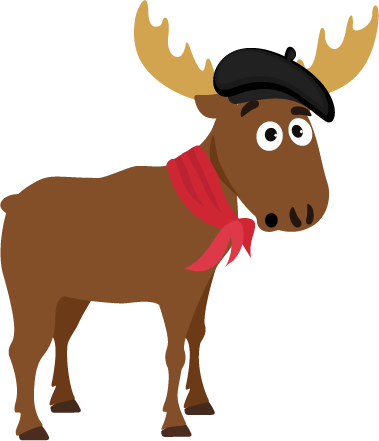Create a timeline to illustrate your investigation of a topic related to New Hampshire’s history. A timeline shows information according to when it happened, in the order that events happened. Explore the “Moose on the Loose” Timeline to inspire your own project.
Choose Your Question or Theme
What big question do you have about New Hampshire history? Choose a type of timeline that will best illustrate the answer to that question:
Thematic Timeline
Is your question related to a big theme from history? For example, you may want to know more about immigration throughout New Hampshire’s history, inventions that impacted how people lived in the state, or weather events and natural disasters. Research 5–7 events related to your theme from different periods of time and display what you learned about them on your timeline.
Cause and Effect Timeline
Does your question ask how one event led to another? For example, you may want to know more about how the Civil War impacted life in New Hampshire. Choose a starting event and, through your research, find at least 5 events that were a result of your starting event. Display what you learned about the connections between these events on your timeline.
Specific Event or Person Timeline
Does your question focus on the life and work of a particular New Hampshire person or the story of a specific event in New Hampshire history? Research 5–7 events related to your question about this person or event and display what you learned about them on your timeline.
Start Your Research
Use the Timeline Research Template to begin gathering information for each entry. If researching an event, look for when and where it happened, what happened, who was involved, and how it answers your big question or related to your theme. If researching a person, look for details about that person’s life and work that answers your question or relates to the theme of the timeline.
Build Your Timeline
What materials will you use to build your timeline? Consider these options:
Hang it Up: Write your interval years on 3”x5” index cards and attach them to twine or string with paper clips. Glue your images and captions to event cards made of slightly larger pieces of cardstock. Hang the event cards from the twine using even lengths of string.
Roll it Out: Use a thick marker or paint to draw your timeline on a length of butcher paper. Glue your event images and captions to colorful printer paper. Glue these event pages above and below your painted line at the appropriate interval.
Pop it Up: Fill small jars or pots with sand or marbles. Write your interval years on 3”x5” index cards and glue them to wooden craft sticks. Poke these interval sticks into the jars or pots and arrange them in a line. Fold cardstock in half to make tents and glue your event images and captions to one side of each tent. Place tents at the appropriate places between intervals.
Fold it Up: Cut a poster board into three rectangular strips and glue the strips end to end to make one long strip. Fold the strip accordion style to create even sections about 7 to 8 inches wide. Use a marker to draw a line lengthwise through the middle of the strip. Then draw line along each fold to mark your intervals. Fill in the sections at the appropriate spaces with your event images and captions. Glue a cardboard rectangle the same size as each section to either end of the strip to make a front and back cover, so that when you fold up the strip you have a timeline book.
Go Digital: Use Google Slides or PowerPoint to create a timeline that grows as a viewer clicks along it. Use animation tools to make dates, captions, and images appear.
Once you’ve decided what form your timeline will take, decide how each entry will be presented and what type of information you will include:
-
Will each entry have an image and caption? If so, try to find an image of a primary source (photograph, document, map, or object). The caption should also include where you got the image, which is called the source.
-
Will each entry be divided into categories (date, name of person or event, a paragraph explaining what happened, another paragraph explaining why it is important or how it relates to other entries on the timeline?).
-
Or will each entry be one long paragraph?
-
Or will you create a different format for each entry?
Check Your Timeline
Is your timeline complete? Make sure it has the following:
-
A title that explains the purpose of the timeline. If your title doesn’t explain the question you were looking at, be sure to include the question below the title.
-
A specific time span (for example: 1600–2020 or 1850–1870).
-
Clearly marked regular intervals of time (for example: decades or every five years)
-
Clearly labeled events with captions that explain when each event occurred and how each event helps answer your question.
-
Events illustrated with primary source images (historic maps, photographs, documents, and objects).







